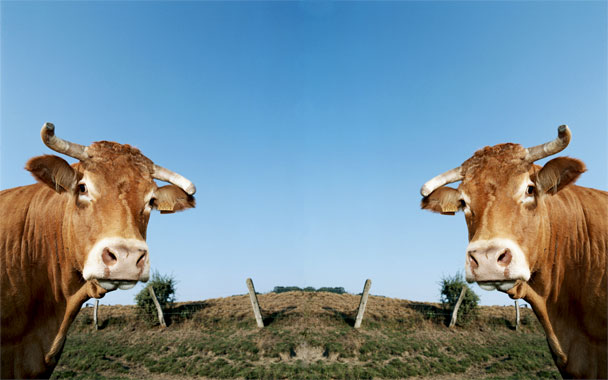I just found out that I may have dined on meat from the progeny of a cloned cow. You may have, too.
In January, the Food and Drug Administration (FDA) decreed that meat and milk from cloned livestock was safe to eat. Last week, the agency went a step further and said that it was “theoretically possible” that the meat from the offspring of cloned cattle was already in the food supply.
Theoretical because there is no requirement that beef from cloned animals and their offspring be labeled as such (even though the FDA has received 150,000 letters from consumers requesting labels), nor is there any mechanism for monitoring when, where, or how the offspring of cloned cattle are slaughtered and sold.
“It worries me that this technology is out of control,” Charles Margulis of the Center for Environmental Health told Rueters.
In the wake of the FDA’s announcement, two Wall Street Journal reporters did a bit of sleuthing around and discovered that the presence of the offspring of clones in our food supply was more than theoretical. They talked to two farmers who had shipped offspring of clones to slaughter and reported that there are hundreds, maybe thousands, of the bioengineered critters roaming the range today.
“There’s no way to differentiate them,” the USDA’s Bruce Knight told the reporters, adding that the number slaughtered is so small that it is “highly unlikely” for any given consumer to have eaten cloned cow.
I don’t know about you, but “highly unlikely” is not good enough for me. One more reason to buy organic meat and milk—last year a USDA panel said that cloning was not compatible with the idea of organic foods.


